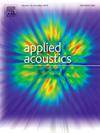Cross time–frequency transformer for annoyance evaluation of noise in aircraft cabin
IF 3.4
2区 物理与天体物理
Q1 ACOUSTICS
引用次数: 0
Abstract
Developing a high-precision model for aircraft cabin sound quality prediction is crucial for advancing acoustic design, as it enables reliable prediction-based annoyance prediction rather than relying solely on traditional physical acoustic metrics. However, accurate prediction across various flight phases remains challenging due to noise complexity. Traditional methods (e.g., SVM, XGBoost) and deep learning models (e.g., CNN, LSTM) often fail to fully capture nonlinear relationships or generalize robustly. To address these limitations, this study proposes the Cross Time-Frequency Transformer (CTF-Former), which integrates time-domain and frequency-domain features through a four-stream architecture. The model employs self-attention and cross-attention mechanisms to enhance time–frequency interactions. Additionally, the Self-attention-based Feature Fusion (SaFF) module is introduced to optimize multi-stream feature integration. The CTF-Former demonstrates competitive performance, achieving a normalized MAE of 0.052 ± 0.004 (49.5 % lower than SVR, 25.7 % lower than XGBoost) with reduced variance compared to LSTM (standard deviation decreased by 80 %). It also attains RMSE of 0.068 ± 0.006 and R2 of 0.89 ± 0.03 in 5-fold cross-validation, outperforming all compared baselines in average accuracy and stability. The model demonstrates applicability in annoyance prediction and has the potential to support practical applications.
飞机客舱噪声干扰评价的交叉时频变压器
开发一个高精度的飞机客舱音质预测模型对于推进声学设计至关重要,因为它可以实现基于预测的可靠的烦恼预测,而不是仅仅依赖于传统的物理声学指标。然而,由于噪声的复杂性,在不同的飞行阶段进行准确的预测仍然具有挑战性。传统方法(如SVM、XGBoost)和深度学习模型(如CNN、LSTM)往往不能完全捕获非线性关系或进行鲁棒推广。为了解决这些限制,本研究提出了交叉时频变压器(CTF-Former),它通过四流架构集成了时域和频域特征。该模型采用自注意和交叉注意机制来增强时频交互作用。此外,还引入了基于自关注的特征融合(SaFF)模块来优化多流特征集成。CTF-Former具有竞争力的性能,实现了0.052±0.004的归一化MAE(比SVR低49.5%,比XGBoost低25.7%),与LSTM相比方差降低(标准差降低80%)。5倍交叉验证的RMSE为0.068±0.006,R2为0.89±0.03,平均准确度和稳定性优于所有比较基线。该模型在烦恼预测方面具有一定的适用性,具有支持实际应用的潜力。
本文章由计算机程序翻译,如有差异,请以英文原文为准。
求助全文
约1分钟内获得全文
求助全文
来源期刊

Applied Acoustics
物理-声学
CiteScore
7.40
自引率
11.80%
发文量
618
审稿时长
7.5 months
期刊介绍:
Since its launch in 1968, Applied Acoustics has been publishing high quality research papers providing state-of-the-art coverage of research findings for engineers and scientists involved in applications of acoustics in the widest sense.
Applied Acoustics looks not only at recent developments in the understanding of acoustics but also at ways of exploiting that understanding. The Journal aims to encourage the exchange of practical experience through publication and in so doing creates a fund of technological information that can be used for solving related problems. The presentation of information in graphical or tabular form is especially encouraged. If a report of a mathematical development is a necessary part of a paper it is important to ensure that it is there only as an integral part of a practical solution to a problem and is supported by data. Applied Acoustics encourages the exchange of practical experience in the following ways: • Complete Papers • Short Technical Notes • Review Articles; and thereby provides a wealth of technological information that can be used to solve related problems.
Manuscripts that address all fields of applications of acoustics ranging from medicine and NDT to the environment and buildings are welcome.
 求助内容:
求助内容: 应助结果提醒方式:
应助结果提醒方式:


